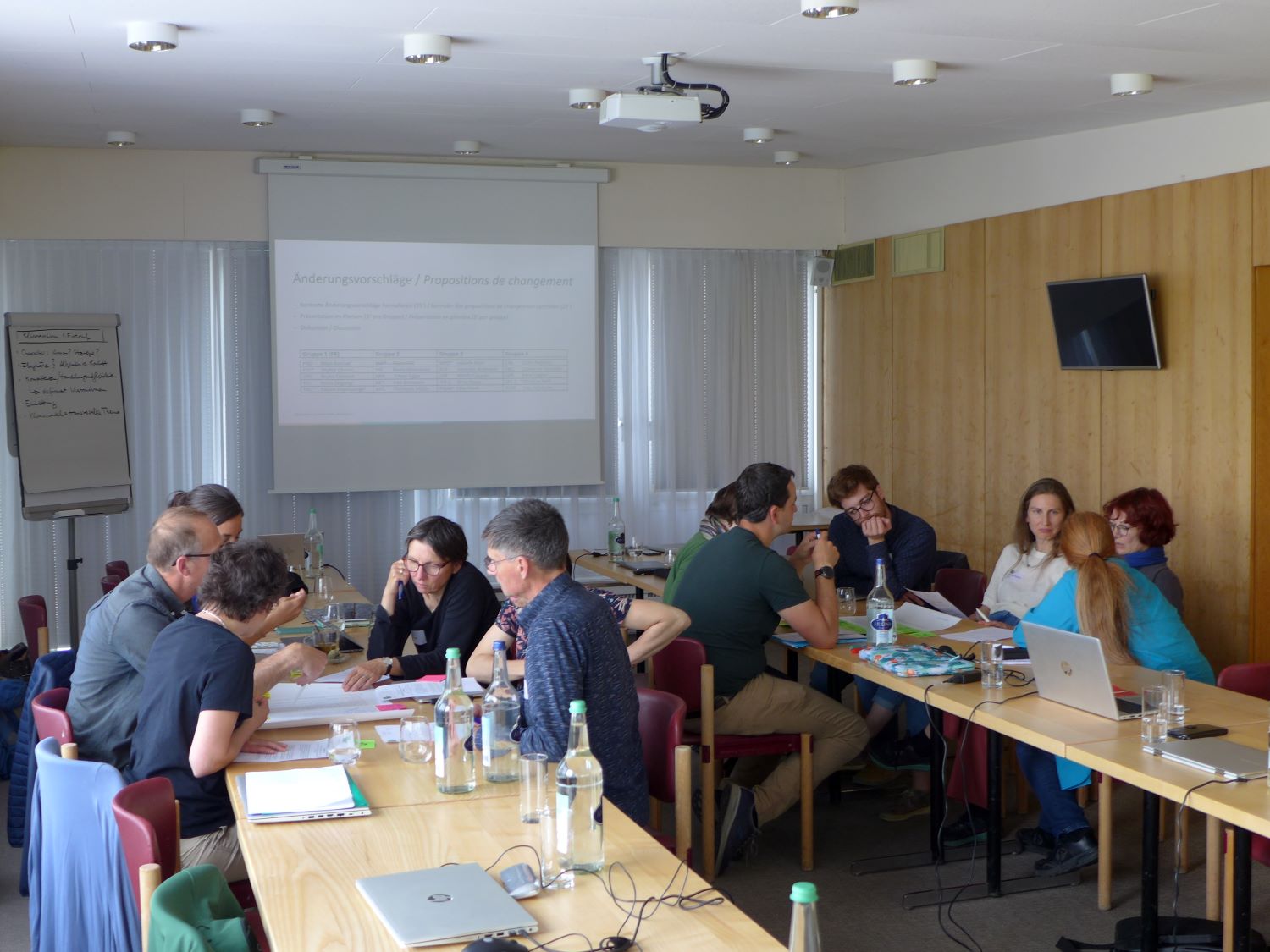Case Study
Development of climate mission statement for Swiss parks
Contact name
Dominique Weissen Abgottspon
Institution name
Swiss Parks Network
Region & country
Switzerland
Summary
Swiss parks have set themselves the goal of strengthening their commitment to climate protection and adaptation to climate change and making it more visible. To this end, they have jointly developed a climate policy statement, which has since served as a common point of reference for the implementation of projects and for targeted communication.

The directors of the Swiss parks working on the climate policy
Swiss Parks Network
Background of the project
The projects implemented by the parks in the areas of energy, regional products, biodiversity, sustainable tourism, mobility, and education often have a positive impact on the climate. However, this aspect has been little communicated in the past. As a result, the opportunity to raise awareness of this issue among the various stakeholders has been missed.
Climate change is a major concern for the parks. As model regions for sustainability, they want to set an example and play an important role in anchoring climate measures in the regions. In order to clarify their role among the various stakeholders at local, regional, and national level and to be able to campaign even more vigorously for climate measures, the parks have decided to develop a climate mission statement in a participatory process.
Solution and actions taken
The parks set themselves the goal of summarizing their role and key principles in a short joint mission statement. To achieve this, the parks asked themselves a number of questions. Which areas in the parks are particularly affected by climate change? What are the parks already doing in these areas to protect the climate and adapt to climate change? What additional measures are needed? A joint position on climate change was then developed, the climate mission statement.
The mission statement was developed during two online workshops and one on-site workshop. The work was based on a Miro board, on which basic documents and results were saved. The development process lasted from May to September 2024, and in November 2024, the mission statement was adopted by the General Assembly of the Swiss Parks Network.
The climate mission statement was written in French, Italian, and German. The project was supported by an external specialist agency (cost: CHF 10,500).
Other institutions or parties involved
– 20 Swiss Parks: Development of basic principles, mission statement, adoption
– Swiss Parks Network: Project management, financing, coordination
– Federal Office for the Environment/ Bundesamt für Umwelt BAFU: Financing and support
– PLANVAL office, Bern: Support and moderation
Results
20 parks and their 230 municipalities are guided by the climate model when implementing climate measures.
Challenges
– Combining solutions discussed in different groups into a single short text is a challenge.
– It is difficult to reach a common position—even if you think you are on the same wavelength, priorities and approaches differ.
– A common position means the lowest common denominator—for this reason, the position is less visionary, but valuable and meaningful
Lessons learned
– Define the target vision from the beginning and stick to it: in our case, it was a one-page document that applies to all parks.
– The journey is the destination: as part of the process, there were many discussions among the parks about the climate crisis, the parks’ areas of action, best practices, opportunities seized, and opportunities missed. These exchanges were just as valuable as the actual result, the climate mission statement.
– Discuss
Contact name
Dominique Weissen Abgottspon
Institution name
Swiss Parks Network
Website(s)
